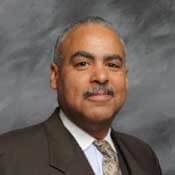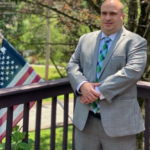Getting into a car accident can be a frightening experience, especially when someone else’s actions cause the crash. After an accident, proving who is at fault is essential for receiving compensation to cover medical bills, vehicle repairs, and other losses. In New Jersey, determining fault can sometimes be tricky, as the law has specific rules that impact the process. If you have been in a car accident in New Jersey, understanding how to prove fault can make a difference in getting the support you need. This page explains the steps involved in proving fault and what evidence may be required to strengthen your claim. At, Freeman Law Center, LLC., we are here to guide you through the legal process and help you navigate the complexities of your case.
Understanding Fault in New Jersey Car Accidents
In New Jersey, there is a specific system in place for determining fault after a car accident. This system, called “comparative negligence,” affects how much compensation a person can receive based on each person’s level of fault in the accident. In a car accident case, the person who caused the accident can be held responsible for covering the other person’s losses. However, if both people share some level of blame, the compensation is adjusted based on their percentage of fault. For instance, if a person is 30 percent responsible for an accident, they can still receive compensation, but it would be reduced by that 30 percent. In cases where proving fault is not easy, it can be helpful to have strong evidence and a thorough understanding of how New Jersey’s rules on comparative negligence work.
Collecting Evidence from the Accident Scene
The first step in proving fault is gathering evidence from the scene of the accident. Evidence is any information that shows what happened and who is responsible. This can include photographs of the accident scene, which capture the damage to both vehicles, the position of the cars, and any skid marks on the road. Photographs can also show the weather and road conditions at the time of the accident, which might help explain why the crash happened. Another important piece of evidence is witness statements. Witnesses are people who saw the accident take place, and they may have important information about who did what in the moments before and after the crash. If there are any nearby businesses with security cameras, footage from those cameras can also be valuable.
Mr. Freeman represented me in a child custody case during the beginning of difficult times of Covid. As a father, I was at first worried about what the outcome of the case Maybe. However, Mr. Freeman assured me he would get me my rights. Thanks to knowledgeable Mr. Freeman and his professional staff, I was granted my rights. Cindy & Mr. Freeman were able to answer all my questions without delay. Highly recommend! SAM BEAST If you need a great family lawyer I recommend the freeman law center without hesitation. My life was a complete shambles because of the divorce I had to go through I didn’t know that i could feel so bad. The efforts that I received from Brian was outstanding and I can’t put in words how much I appreciated the way I was treated by his staff. Their slogan “Quality and Commitment” was not just words it was action. RON THATCHER
Getting a Copy of the Police Report
When a car accident happens, the police are usually called to the scene to assess what took place. The police will investigate, talk to witnesses, and take note of important details. Afterward, they write a police report that summarizes the accident. This police report can be one of the strongest pieces of evidence for proving fault. The report often includes the officer’s view on who caused the accident based on the evidence they collected. It may also include details about any tickets issued, such as if one of the drivers was given a citation for speeding, failing to stop at a red light, or other driving violations. This can provide more information that points to which driver was at fault.
Using Traffic Laws to Prove Fault
In New Jersey, specific traffic laws govern how drivers should act on the road. Knowing these laws can help make the case for who was at fault in an accident. For example, if a driver failed to yield when merging onto a highway or made an illegal left turn, these actions would go against New Jersey traffic laws. Violating a traffic law can be a strong indicator of fault, as the driver who broke the law could be considered responsible for the accident. To prove fault in a car accident, it’s important to show that one driver acted in a way that did not follow traffic laws and that this action directly led to the accident.
The Role of Medical Records in Proving Fault
While medical records might not seem directly related to proving who caused the accident, they can actually play a helpful role. Medical records document the injuries that were caused by the accident and can provide proof that the collision had a significant impact. If the injuries are consistent with the type of accident that occurred, this information can help support your claim. For example, if you were hit from behind and suffered a neck injury known as whiplash, medical records showing treatment for this injury can strengthen the argument that the other driver’s actions led to harm.
Gathering Testimony from Witnesses
Sometimes, proving fault in a car accident may require testimony from professionals who are skilled in reconstructing accidents. These individuals can review evidence from the scene, such as the damage to vehicles and road markings, to understand how the accident happened. They might use this information to create a detailed explanation of who likely caused the accident. This can be especially helpful in complex cases where it is difficult to determine fault, such as multi-car accidents. Having an witness can provide additional clarity and can make a strong impact on how the fault is assigned.
Using Insurance Claims to Help Establish Fault
Insurance companies are often involved in car accident cases, especially when there is damage to vehicles or injuries that require medical treatment. When an insurance claim is filed, the insurance adjusters investigate the details of the accident and review the evidence to decide who is at fault. They might look at the police report, witness statements, and other available evidence. While insurance companies have their own processes for determining fault, their findings can support your claim. However, it’s important to keep in mind that insurance companies may try to assign some level of blame to both drivers in order to reduce their payout.
Hiring Legal Assistance to Prove Fault
Proving fault in a car accident can be a complicated process, and there are many details that need to be carefully considered. Because of this, some people choose to seek the assistance of a legal team with experience in handling car accident cases. Lawyers who focus on New Jersey car accidents can help by collecting evidence, analyzing the police report, and reviewing witness statements to build a strong case. They understand the rules around comparative negligence in New Jersey and can work to protect your rights. With the right guidance, you can feel more confident about the steps you’re taking to prove fault and move forward.
Why Time Matters in Gathering Evidence
It’s important to remember that gathering evidence right after a car accident can make a big difference. Over time, evidence can disappear, memories can fade, and details can become harder to verify. Acting quickly to collect evidence is important for building a clear picture of what happened in the accident. Some evidence, like road markings or debris, may only be available right after the accident. Witnesses may also remember more details if they are asked soon after the accident occurs. This is why starting the process of proving fault as soon as possible can make a stronger case in the end.
Understanding the Comparative Negligence Law in New Jersey
Comparative negligence is a key part of proving fault in New Jersey. Under this law, both parties in an accident can share some level of responsibility, but the level of responsibility affects how much compensation each person can receive. If you are found to be less than 50 percent at fault, you can still collect compensation, but if your fault is greater than 50 percent, you may not be eligible to receive damages. For example, if you were found to be 20 percent at fault and the other driver was 80 percent at fault, your compensation would be reduced by that 20 percent. This rule can sometimes make proving fault challenging, but having solid evidence can support your position.
Preparing for the Legal Process in New Jersey
If you are considering pursuing a case after a car accident, it’s important to be prepared for the legal process in New Jersey. Proving fault may require several steps, from gathering evidence to speaking with witnesses and potentially working with an attorney who can represent you. Being ready for this process can help you achieve the best possible outcome and ensure that you have the support you need. Knowing what to expect, having patience, and staying organized can make the legal journey smoother as you work toward proving fault in the accident.
If you or someone you know has been involved in a car accident in New Jersey, understanding how to prove fault is essential. Freeman Law Center, LLC is here to help you navigate the process and provide the support you need to gather evidence, file claims, and build a strong case. With a focus on helping accident victims through each step of the process, Freeman Law Center, LLC can assist you in obtaining the compensation you deserve. Reach out today to discuss your case and take the first steps toward finding the justice you need after a car accident.






